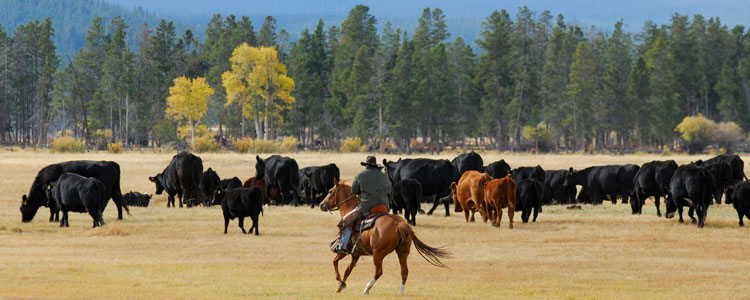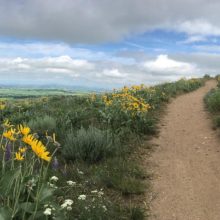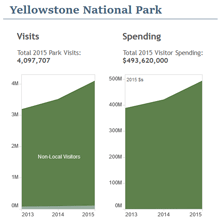Benefits of the LWCF Program
The public has not always been aware of the range of Land and Water Conservation Fund (LWCF) projects, their benefits, or the distribution of projects and benefits across the United States.
This data visualization is the only publicly available resource that shows recent LWCF projects and their benefits to the American public. Projects are organized into six benefits categories:
- Access / Sportsmen: Opens up new areas of public land for hunting, fishing, and other outdoor activities. Many LWCF projects secure strategic parcels and rights-of-way to enable new public access to previously restricted public lands.
- Cultural / Historical: Protects resources with important cultural and historical value, including paleontological, archaeological, prehistoric, and historic resources. Important sites, from the hallowed ground of Civil War battlefields to ancient petroglyphs, have been permanently protected through the LWCF.
- Parks / Recreation: Creates new recreational opportunities in cities, towns, and rural areas across the country. From urban ball fields to iconic wilderness areas, these projects protect open space and develop facilities to provide a wide range of new recreational opportunities.
- Species / Habitat: Protects important habitat for fish and wildlife species, supporting wildlife species recovery goals and healthy ecosystems.
- Water: Safeguards water resources, protecting the forests, rivers, and watersheds that provide communities with safe drinking water, water-based recreation opportunities, and important aquatic habitat.
- Working Lands: Supports traditional uses on working lands. Voluntary partnerships with farmers, ranchers, and foresters help sustain agricultural operations and conservation stewardship on private lands to ensure the long-term economic vitality of rural communities.
An accompanying data table provides sortable project information by state, agency, federal funding, acres, and benefits for programs in the Land and Water Conservation Fund, 2011-2014.
We also analyzed federal vs. state and local distributions during the four years studied, finding a large majority of projects –by funding and by acres–went to non-federal programs.
Background, Federal Agencies, and Methods
The LWCF was created by Congress in 1965 to assist efforts at the federal, state, and local levels to improve public land access and recreation, along with water and habitat protections.
Headwaters Economics worked with various federal agencies in the Departments of Interior and Agriculture to create a comprehensive and accurate database for this analysis.
After acquiring project data from the federal agencies that oversee the various LWCF programs, Headwaters Economics assigned each project to one or more benefit categories.
These categories were arrived at after a close reading of project descriptions and assessment of the more common project types and purposes. They were discussed with and reviewed by agency data providers.
A variety of federal agencies participate in LWCF programs that are captured in this analysis: Bureau of Land Management, Fish and Wildlife Service, National Park Service, and Forest Service.
More details and information is available through the methods and definitions document (pdf).





